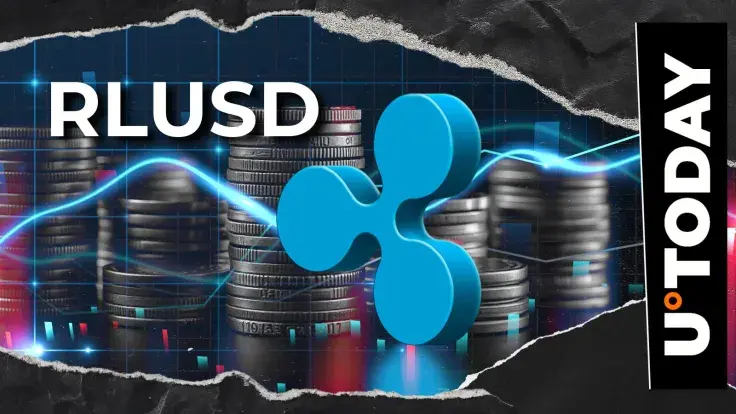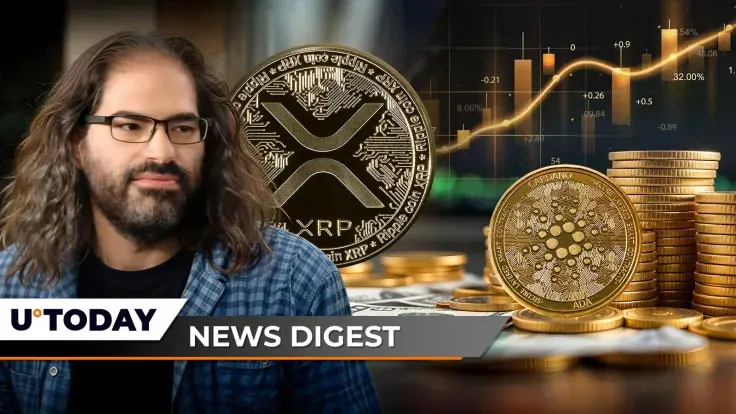RLUSD Shakes Up DeFi: Becomes Key Collateral on Aave's Horizon Platform

Aave Labs, the software technology company behind the Aave protocol, has recently launched a groundbreaking institutional lending platform named "Horizon." This innovative platform is designed to bridge the gap between traditional finance (TradFi) and decentralized finance (DeFi) by enabling the use of tokenized products as collateral. Through strategic partnerships with entities like Superstate and Securitize, Horizon facilitates the tokenization of various assets, including U.S. Treasuries, corporate bonds, and money-market funds, thereby creating a new paradigm for on-chain financial operations.
A critical component of the Horizon platform is Ripple's highly regulated RLUSD stablecoin. Ripple has stated that RLUSD is poised to usher in "a new era of efficiency for on-chain finance." Reece Merrick, Ripple's managing director for the Middle East and Africa, expressed enthusiasm for RLUSD's significant role within Horizon. The demand for RLUSD has been notably high since Aave initially allowed its supply and borrowing in April, with a remarkable $76 million worth of the stablecoin supplied in just a single day. Jack McDonald, Senior Vice President of Stablecoins at Ripple, further underscored this trend in July, commenting on the "exploding" growth of stablecoins.
Beyond RLUSD, Aave's Horizon platform supports a range of other collateral options, reinforcing its versatility. These include Circle's USDC, Aave's native GHO, Circle’s USYC yield fund, and VanEck’s VBILL fund, providing institutional users with diverse choices for collateralizing their lending activities.
Meanwhile, the broader cryptocurrency ecosystem continues to navigate various developments, including discussions around blockchain architecture and market dynamics. Ripple's Chief Technology Officer, David Schwartz, recently addressed resurfaced speculation regarding a potential fork of the XRP Ledger. Schwartz clarified that any public blockchain possesses the inherent ability to fork if its participants disagree on fundamental rules or proposed changes. He emphasized that, unlike permissioned systems, open layer-one networks allow dissenters to create and run their own version of the chain.
Schwartz views forks primarily as fallback options rather than genuine opportunities for growth. He highlighted this principle as a core differentiator between open blockchains and centralized platforms. While acknowledging theoretical benefits such as doubled throughput and the ability for each side to focus on specific use cases, Schwartz pointed to market reality: capital and activity almost invariably consolidate towards the side perceived as stronger, often marginalizing the other chain. He concluded that "the market seems to want to pick the better side," reaffirming forks as a contingency rather than a primary growth strategy.
In other market news, Cardano (ADA) has shown signs of a price rebound, with its value changing hands for approximately $0.8683, representing a 0.95% increase in 24 hours according to CoinMarketCap data. This upward movement has put a golden cross on the three-hour chart (where the 9-day Moving Average is entangled with the 26-day MA) within reach. For Cardano to break this dormancy and achieve its short-term target of $0.90, sustained buying momentum will be crucial, reflecting the ongoing bull-bear tussle in its price scenarios.
You may also like...
Culture Shift at Nottingham Forest: Nuno Sacked, Ex-Australia Coach Set to Take Reins!

Nottingham Forest has dramatically shifted its managerial direction, sacking Nuno Espirito Santo, who led them to Europe...
Super Eagles' World Cup Dreams on the Line: Osimhen Injury, Mokoena Controversy Mar South Africa Showdown!

Nigeria's Super Eagles face a do-or-die World Cup qualifier against South Africa, complicated by star striker Victor Osi...
Emmy Glory: Creative Arts Awards Crown 'Severance,' 'The Penguin,' and 'SNL50' with Major Wins

The Creative Arts Emmy Awards celebrated outstanding achievements in television, with Apple TV+'s "The Studio" and HBO M...
Horror Sensation: 'The Conjuring: Last Rites' Unleashes Global Box Office Terror and Spine-Tingling Reviews

“The Conjuring: Last Rites” delivers a record-breaking global box office debut, cementing its place as the highest-gross...
African Music Crowns Its Best: Burna Boy, Davido Lead Star-Studded AFRIMA 2025 Nominations!

The 2025 All Africa Music Awards (AFRIMA) unveil a record-breaking nominations list, with Nigerian superstars Burna Boy ...
Blockbuster Showdown: 2025 MTV VMAs Reveals Performers, Presenters, and Shocking Winners List!

The 2025 MTV Video Music Awards, hosted by LL COOL J, celebrated music's biggest stars with Lady Gaga dominating the nig...
Oasis Reunion Chaos: Watchdog Threats, Line-Up Drama, and Escalating Feuds Plague Iconic Band's Return

Oasis is embarking on a highly anticipated reunion tour in 2025, with Andy Bell confirming his return to the band's line...
Explosive Allegations Rock Alexander Brothers: Accusers Detail Assaults as Lawyers Deny Claims

Luxury real estate moguls Oren, Alon, and Tal Alexander are accused by over 60 victims of rape and sexual assault, with ...
